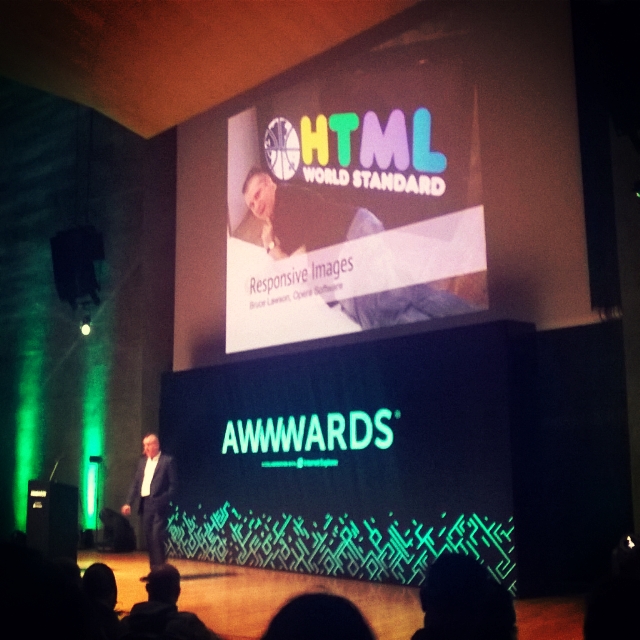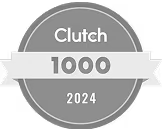When we found out that Awwwards Conference organizers picked Barcelona as a destination place for their web design event, we had no doubts we had to be there. You won't find better hotspot for creative event like this anywhere else.
Here are some quick notes and highlights from best talks from the conference. To cut the long story short: I enjoyed it a lot, and with no doubt it's well worth attending.
Over 600 web professionals in one place (while "only" 200 in Paris, where previous conferece was) speaks for itself. While I enjoyed most of the talks, I picked most notable below:
"Real artists ship" by Haraldur Thorleifsson
That was a solid start of a Day 1! I didn't expect the very first presentation by Haraldur, a Creative Director from Ueno (you know them for outstanding interfaces for Dropbox, Airbnb or Medium) will remain one one of my favourites.

The presentation was mostly a beautiful showcase of Iceland studio's best works. But it was a bit more than that. I liked that Haraldur reminded us not to forget that designers, in fact, play a key role within the team and agencies' structure. With a new creative job names popping out we must not forget a designer has all desired skills (UI, UX, IA and more...) to make project successful. Designers are often not given enough credit during typical agency's responsive design workflow.
Another interesting piece Haraldur said is that they don't pitch at Ueno. It's something not many agencies can afford I think, but the fact it's nearly impossible to create meaningful & problem solving UI/UX interfaces during pitching process (so without in-depth business analysis preceded by hours of client talks)... is in nothing but the truth.

I couldn't agree more with a "message to designers":
"Designers, always create your own wireframes!"
I took it as a slight criticims to the teams where project managers or independent UX guys are solely responsible for wireframing/prototyping.

In the end, it all comes down to trust & communication, being key components of a succesfull project, recalled Haraldur.
If you work directly with the clients, below may sound like a cliché:

But when you actually find out Ueno creates Google Santa Tracker in 8 weeks with a team of 5x front-end developers & 2x designers you start to respect and admire this studio even more.
Finally, business people and project managers were likely to remember this one:
"Deal only with decision makers."
"<picture> and responsive images" by Bruce Lawson
Bruce (evangelist for open Web Standards for Opera) proposed the new <picture> element in 2011. Then it's just gone live in Opera, Chrome, Firefox... and not yet in IE :).
Bruce has a great gift for public speaking and his talk about web performance and importance of responsive images was excellent! Bruce told the story about the new element which will make sure retina images will be served in the most optimal way possible.
Let's not forget: speed is part of responsive. You save bandwidth = you get more customers = that generate more sales. It's a pity support among browsers is still lacking, but I'm hopeful that this problem will be solved very soon (I'm looking at you IE :).

Bruce gave full access to the slides and you can grab his presentation here.
"Side Projects are Stupid" by Tobias van Schneider
Tobias, Soptify's Design Lead, gave the most inspiring talk! No wonder this bearded guy won Designer of the Year awwward.

His talk was an incredibly inspiring tour over his fun (and highly viral) side-projects. In fact, projects such as Authentic Weather or The Passive Aggressive Password Machine are smart move being a perfect promotional tool of designers'/agencies' services.
Tobias explained 5 principles to follow with side projects:
- Simple Stupid
- Ignore Everybody (because good idea usually comes from 1 person!)
- Trust Your Gut
- A Jack Of All Trades (diversity=strength; being too specialized narrows your perspective)
- Stay Busy (by default)
I fully agree with what Tobias said about useless meetings & never-ending brainstorming sessions. Harsh, yet truth. It reminded me about this pretty old piece of reading from 37 Signals: Meetings are Toxic.

Following quote was also remarkable:

What adds even more value to his speech is that Tobias reminded us the importance of showcasing not just results (output) of work, but focus more on the process. Does a portfolio really encapsulate all that you are as a designer? Not really, the process is you, nowaydas we all seem to be aware that storytelling sells.

Tobias talk was followed by Meagan Fisher (a Brooklyn-based web designer) who gave a speech about the empathy in UX/UI and how it relates to users' needs. User empathy, defined as the ability to understand the feelings of the users, comes from repeated, purposeful exposure to users - said Megan. At the same time she brought and explained some of the popular usability testing techniques such as in-person interviews, remote testing, observation and analytics.
Every two speeches there was a short coffee and lunch break. Everything well-organized. No queuing, everyone following schedule, super-tasty Jamón on dinner tables... just perfect.

"Betting on the Web to #Win" by Phil Hawksworth
That was a very solid talk by Phil who's a Technical Director at R/GA in London. His passionate story focused on web fundamentals with a hypertext & links playing main characters. Phil did a great job with a timely reminder of the power of URL. I found it valuable to bring back the fact that such a simple principle as the hyperlink has been so essential to the medium that we all rely on now. I didn't know he was the guy who introduced "double meh" :// though!

While some of us sometimes seem to be too-enthusiastic about new web design trends Phil pointed out what really matters, and this is web performance.

The slide showing size and lag of your brand new parallax page was quite funny too.
"Designing with Chrome DevTools" by Paul Bakaus
I appreciate practical value of Paul's presentation. Paul, a Developer at Google, has been working on many design-specific features to make DevTools a tool for designers, as much as for developers. He gave fantastic sneak preview of useful new things, such as improved responsive design controls or rich live editing of animations.
I'm sure the new DevTools will quickly jump into Merixstudio's coders toolbelt.
It would be a mistake not to mention about Jeremy's Keith (from Clearleft) talk "Enhance!". At the start of the talk he gave a promise to the public: "the principle of progressive enhancement will change the way you think about your work" and soon after showed the home page of Instagram with JavaScript turned off.

I especially enjoyed hearing his views on the complicated (and usually frustrating for QA teams) subject of browser support. He clearly advised to stop trying to make websites look identical on every browser. If you try to make your website to look the same in every browser it's a terrible waste of time, he said. Instead, you should say "I support but I don't optimize for IE8". Sounds good, doesn't it? Easier said than done, because in order to really solve the problem we have to change people (clients?) minds. The fact is that progressive enhancement will always serve you well.

All in all Awwwards Conference was fantastic experience, full of inspiring moments and amazing studios I will now start to watch even more closely: Ueno, Dogstudio, Hello Monday, B-Reel, AQuest, and I suggest you do the same :).
Download Awwwards Conference 2015 presentations:
- Betting on the Web to Win by Phil Hawksworth
- <picture> and responsive images by Bruce Lawsone
- Responsive Web Typography by Marko Dugonjić
- JavaScript ♥ Unicode by Mathias Bynens
- No Guts No Glory by Dogstudio
More videos:
See you next time!
Does a portfolio really encapsulate all that I am as a designer - See more at: http://www.uxmatters.com/mt/archives/2009/10/process-not-portfolio.php#sthash.KfgibXqP.dpuf
Does a portfolio really encapsulate all that I am as a designer - See more at: http://www.uxmatters.com/mt/archives/2009/10/process-not-portfolio.php#sthash.KfgibXqP.dpuf
Navigate the changing IT landscape
Some highlighted content that we want to draw attention to to link to our other resources. It usually contains a link .
.svg)

.webp)



.svg)
.svg)
.avif)

.avif)
.avif)
.avif)
